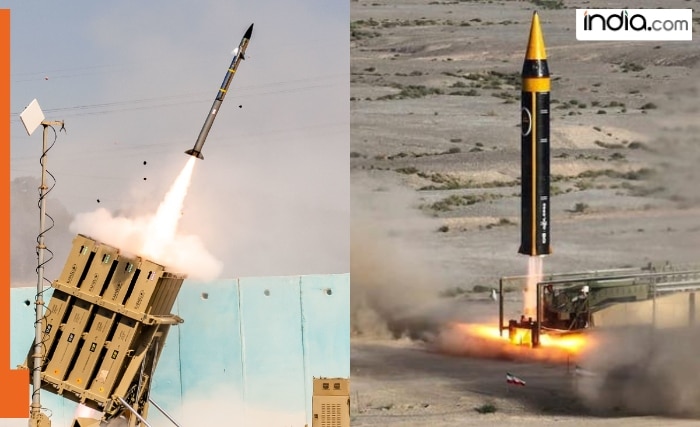Iran’s hypersonic missiles vs Israel’s famed Iron Dome air defence system, who will win, who will lose?

New Delhi: The past few days have seen extraordinary action in the Missile East. Yesterday, October 7, was the first anniversary of Hamas’ attack and invasion of southern Israel.
Israel retaliated with continuous and intense airstrikes on the Palestinian territory of Gaza. Subsequently, other armed groups like Hezbollah, the Iraqi Resistance, and the Houthis opened fronts on Israel. These groups together are called the “Axis of Resistance” and joined forces with Hamas claiming solidarity with the Palestinian cause.
This group, the “Axis of Resistance”, is allegedly set up, mentored, funded, trained, and backed fully by Iran.
Iran was not directly involved in the conflict but had to mark its presence twice, updated up to October 7, 2024.
Israel attacked the Iranian embassy in Damascus, Syria on April 1, 2024, destroying the building housing its consular section. Sixteen people were killed in the strike, including eight officers of the Islamic Revolutionary Guard Corps (IRGC). The attack on the embassy building was deemed as a direct attack on Iran, as per international laws.
Twelve days later, on April 13, 2024, the unthinkable happened as Iran launched dozens of drones and missiles on Israel in what it termed as an act of retaliation codenamed “Operation True Promise”. It was the first time that the Persian country attacked Israel directly from its soil with 170 drones, 30 cruise missiles, and 120 ballistic missiles.
Even the most seasoned observers and experts on the Middle East, West Asia, and Israel did not give much chance to Iran nor anticipate that the country would directly lock horns with the Jewish state.
The second instance was the combination of Iranian president Ebrahim Raisi’s suspicious death in a helicopter crash, the alleged assassination of Hamas chief Ismail Haniyeh in Tehran, and the assassination of Hassan Nasrallah, the secretary-general of Hezbollah.
Iran barraged Israel with 400 missiles on October 1 in the attack codenamed Operation True Promise 2.
Now, the whole world is waiting with bated breath for the Israeli retaliation against Iran, which is speculated and believed to target Iran’s nuclear sites.
This raises a pertinent question, can Iran’s missiles dodge and defeat Israel’s much celebrated and acknowledged air defence system comprising the Iron Dome, David’s Sling, and Arrow System?
Here, let’s do an objective fact-check.
Fattah-1: Fattah-1 is a medium-range ballistic missile developed by the Islamic Revolutionary Guard Corps (IRGC) and unveiled in June 2023. According to Iran, it is the country’s first hypersonic ballistic missile and its high manoeuvrability and speed help it to evade missile defence systems, like the ones deployed by Israel.
Fattah-1 missile boasts a range of 1,400 km and can reach speeds up to Mach 15 (5.1 km or 3.2 miles per second), an astounding 18,346 km/h.
In November 2023, Iran unveiled a newer version, Fattah-2 which is reported to have the capability to carry nuclear warheads. Fattah-2 has boosted Iran’s firepower immensely with a range of 1500 km and can fly at a speed of 24,696 km/h.
Iran launched dozens of Fattah missiles at Israel in both attacks and the much-famed Iron Dome could not intercept many of them, as claimed by several reports.
It covered the distance from Iran to Tel Aviv in 6-7 minutes, thereby hardly giving any time to the Israel air defence to act. Even their radars could not trace the incoming Fattah missiles.
With Russia in a state of war with Ukraine, Iran reportedly supplied it with a large number of Shahed drones and it is assumed that Russia will pay in kind or has already paid by arming Iran with its state-of-the-art air defence system.
(This information has been compiled from various, reliable sources and the facts and figures have been cross-checked thoroughly)





